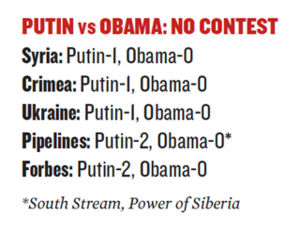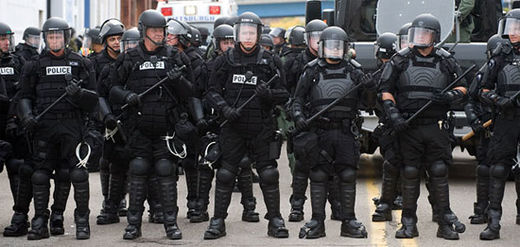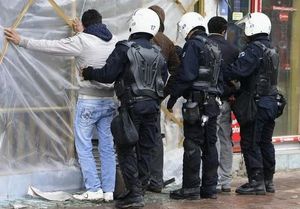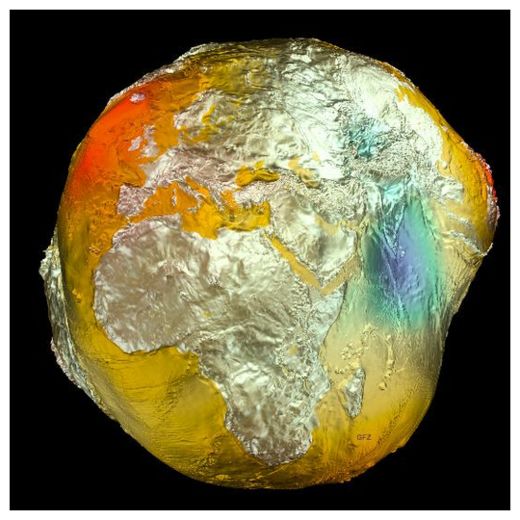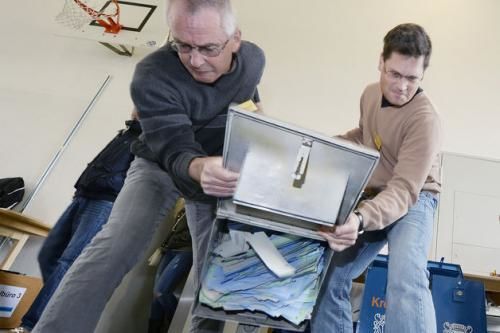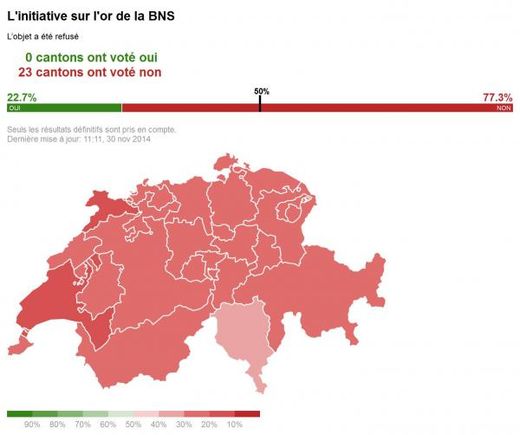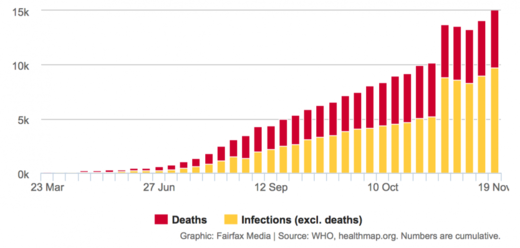
Ebola - not stopping.
[embedded content]
In Air Transmission of EbolaThe corporate media, the CDC and other "authorities" have repeatedly insisted that Ebola can only be contracted by direct contact with an infected person or their bodily fluids and that it does not and cannot not spread through the air.
This is false, and the U.S. government has known that it's false for quite some time now.
This 1995 study conducted by the US Army Medical Research Institute of Infectious Diseases (USAMRID), entitled "Lethal experimental infections of rhesus monkeys by aerosolized Ebola virus" clearly warned of Ebola's ability to spread through the air.
The abstract concluded by saying:
Demonstration of fatal aerosol transmission of this virus in monkeys reinforces the importance of taking appropriate precautions to prevent its potential aerosol transmission to humans.
(Cached version
here)
In 2010 a study entitled "The survival of filoviruses in liquids, on solid substrates and in a dynamic aerosol" was conducted by the British government's Defence Science and Technology Laboratory (Full doc here). The study found that Ebola Zaire can be viable at infectious levels in aerosols for at least an hour and half at temperatures just above freezing. They also discovered that in that same temperature range, Ebola could persist on glass and plastic surfaces for over three weeks and on glass surfaces for at least 50 days. Previous research conducted at FSU had established that Ebola could live on surfaces for at least 6 days.
The fact that temperature plays such a key role in the durability of the virus could have significant implications for containment in colder climates.
Also see this study conducted in 2004 by USAMRID entitled "Marburg and Ebola viruses as aerosol threats." Download the full document here.
Another study conducted in 2012 showed that Ebola was able to travel between pigs and monkeys that were in separate cages and were never placed in direct contact.
One of the scientists involved, Dr. Gary Kobinger, from the National Microbiology Laboratory at the Public Health Agency of Canada, told BBC News that he believed that the infection was spread through large droplets that were suspended in the air.
"What we suspect is happening is large droplets; they can stay in the air, but not long; they don't go far," he explained. "But they can be absorbed in the airway, and this is how the infection starts, and this is what we think, because we saw a lot of evidence in the lungs of the non-human primates that the virus got in that way."
Here is
the original Canadian study that the BBC was referencing.
The website of the Public Health Agency of Canada made a statement dating back to at least October 28th 2011 which also confirmed that Ebola was capable of spreading through the air. The page stated that "1 - 10 aerosolized organisms are sufficient to cause infection in humans". They also stated that "In the laboratory, infection through small-particle aerosols has been demonstrated in primates, and airborne spread among humans is strongly suspected". (Secondary cached version here)
The Canadian government stood by that statement for three years, but for reason they changed the page sometime between August 22nd and August 27th of 2014 and they remove the references to airborne spread among humans. Fortunately Archive.org has multiple cached versions of the page.
We also have this article from CIDRAP (The Center for Infectious Disease Research and Policy) which states the following:
We believe there is scientific and epidemiologic evidence that Ebola virus has the potential to be transmitted via infectious aerosol particles both near and at a distance from infected patients, which means that healthcare workers should be wearing respirators, not face masks.
Interestingly Ebola's ability to spread through the air has also attracted the interest of the U.S. military.
This article from the
Army Times confirms this.
Filoviruses like Ebola have been of interest to the Pentagon since the late 1970s, mainly because Ebola and its fellow viruses have high mortality rates - in the current outbreak, roughly 60 percent to 72 percent of those who have contracted the disease have died - and its stable nature in aerosol make it attractive as a potential biological weapon.
That statement is
interesting on a number of levels.
Now when a virus can be transmitted via aerosols what this means is that it can spread through coughing and sneezing.
Virus researcher Charles L. Bailey, who supervised the government's response to an outbreak of Ebola Reston in 1989, recently made the following statement to the L.A. Times :
"We know for a fact that the virus occurs in sputum and no one has ever done a study disproving that coughing or sneezing is a viable means of transmitting." Unqualified assurances that Ebola is not spread through the air, Bailey said, are "misleading."
About
3,000 aerosol droplets are expelled in a single cough. These droplets fly out of the mouth at speeds of up to 50 miles per hour. A single sneeze can expel up to 40,000 droplets. The vast majority of the droplets are less than 100 microns across (that's the width of a human hair). Many are so tiny that they can't be seen with the naked eye. Droplets which are five microns or less across can stay airborne almost indefinitely as they are lifted up and dispersed by airflow. When a person is sick, the droplets in a single cough may contain as many as two hundred million individual virus particles.
Now remember, in the original version of their page on Ebola the Public Health Agency of Canada stated that "1 - 10 aerosolized organisms are sufficient to cause infection in humans."
You'll hear people downplay this risk by referring to the fact that the current strains of Ebola don't actually cause coughing or sneezing. True, but does Ebola make people immune to the common cold, the flu or seasonal allergies? It doesn't matter what triggers the cough or the sneeze. Even a smoker's cough would be sufficient to project infected aerosols.
Now I've reported on the fact that Ebola spreads through the air since the very beginning of the outbreak in Guinea. The reason I knew to search for the evidence that we referred to was because in high school I read the "The Hot Zone", and that book documented at least two cases where in air transmission was suspected. You'll find these references on pages 91 and 316 (or on the Kindle version at locations 1091 & 3355).
In middle October of 2014 the CDC finally put out a document admitting that Ebola could travel through the air in droplets, and that it could last for several hours on surfaces (of course admitting Ebola can actually be viable for over a month on surfaces would scare people, so the truth is out of the question). At this point they claimed that these droplets could only travel three feet, but this three foot limitation is completely fabricated. This document was originally at this url, but since then they replaced the pdf.
A study conducted by MIT in early 2014 found that aerosolized droplets from coughs or sneezes can travel 200 times farther than scientist previously believed (scientists previously believed that the limit was 6 feet). So that's 1200 feet! The MIT study demonstrated that the smallest droplets can easily span the entirety of a room, and travel through ceiling ventilation units.
The CDC's latest claims that Ebola can only spread three feet through the air on the other hand are not based on any study. In fact if you look at the CDC's own website describing how the flu is transmitted they clearly state that it is spread through droplets as well, but on that page they say that 6 feet is the limit. Furthermore, this half-baked backpedaling comes after seven months of telling the public that the disease could not travel through the air at all.
(The CDC later took down the document claiming that the droplets could only spread 3 feet and replaced it with one that said it could spread 6 feet (original document location here). They also admitted that Ebola could be spread by sneezing).
People with flu can spread it to others up to about 6 feet away. Most experts think that flu viruses are spread mainly by droplets made when people with flu cough, sneeze or talk. These droplets can land in the mouths or noses of people who are nearby or possibly be inhaled into the lungs. Less often, a person might also get flu by touching a surface or object that has flu virus on it and then touching their own mouth or nose.
This is serious. There are people who are dead because they made the mistake of taking the CDC at their word.
As of October 16th, 2014 427 Ebola aid workers had been infected By October 22nd, just six days later that number had risen to 443. These are people who are following the official protocol. They are wearing goggles and face masks, and are covered from head to foot with plastic.
The first Ebola transmission in the U.S. was to a nurse who was wearing full protective gear as well.
Oh they'll come up with excuses, they'll talk about mishaps and breaches of protocol, but the real answer should be obvious: their protocol is wrong.
How Contagious is Ebola?
When confronted with this evidence, you'll find some people will respond by asking "If Ebola is really so contagious then why hasn't everyone who spent time with infected individuals gotten sick?"
Have you ever had one person in your house come down with the flu without spreading it to everyone else? Of course you have, and your entire household wasn't dressed up in full protective gear were they?
This is actually a fair comparison.
Scientists have measurement that they use to describe how contagious a pathogen is. It's called the R0 or R-Naught number. The R-Naught for the flu is 1.3 on average. The R-Naught for this current Ebola outbreak has been estimated to stand at around 1.7 (though some estimates put the number high as 2).
The R-Naught number represents the average number of people one sick individual will infect. These numbers can and do fluctuate over time with environmental conditions, viral mutations, and public health response.
The reality of the matter is that even with Ebola the strength of your immune system is a variable, your personal hygiene and sanitation are variables, your age is a variable, even your genetic makeup plays a role.
In that context keep in mind that Ebola's R-Naught number is where it is in spite of an extreme effort to contain it. This containment involves preventing Ebola patients from mingling with the general population as they do with the flu. Without these containment measures the R-Naught for Ebola would be much higher.
Now you'll hear some people downplay the danger posed by this Ebola outbreak by comparing the death toll in its early stages to other more established diseases like the flu. This is broken logic.
Ebola's mortality rate as a percentage of total infections is many hundreds of times higher than the flu (we'll show you how much higher later in this presentation). The only reason the flu has killed more people than Ebola (so far) is because the flu is already endemic. The flu is firmly established all over the globe, while Ebola has historically been limited to tiny regional outbreaks that burn themselves out in a matter of weeks or months.
This outbreak in west Africa has broken that precedent. It's not burning itself out like a grass fire and containment methods that worked before are no longer working. Why?
Though increased population density and modern transportation are certainly major factors, we now know that there is another significant variable which is contributing to the level of contagion (but almost no one is talking about it).
The Mutation
If you read news reports about this outbreak carefully you will often see people referring to the virus as Ebola Zaire. This is false, and they've known that it's false for some time now. This is a new strain and it is more dangerous than Ebola Zaire.
In our previous video on the topic entitled "Ebola What You're Not Being Told" we reported on the fact that Ebola Zaire had mutated, but at the time it was uncertain whether this mutation was contributing to the unprecedented speed at which the disease was spreading. However now we have new information.
Peter Jahrling, chief scientist at the National Institute of Allergy and Infectious Diseases, recently told reporters that he sees evidence that the new strain has mutated in such a way that enables it to spread more easily.
"viral loads are coming up very quickly and really high, higher than they are used to seeing."
What this means is that this new strain of Ebola replicates faster than previous strains. This makes it more contagious for two reasons: because fluids, and droplets from the patient contain more virus, and because the viral load most likely gets high enough to be contagious slightly sooner. (It's worth noting that Peter Jahrling was one of the scientists who worked on
USAMRID's 1995 study on aerosolized Ebola virus.)
And this new strain is continuing to mutate. A recent study found that new variants are rapidly appearing (more than 300 mutations had occurred by August 28, 2014) and overall Ebola is mutating almost as fast as the seasonal flu. Scientists agree that this will eventually lead to a meaningful adaptation, however Peter Jahrling's statements indicate that already has.
the rate of nonsynonymous mutations suggests that continued progression of this epidemic could afford an opportunity for viral adaptation (Fig. 4H), underscoring the need for rapid containment.
This also means that Ebola vaccines are currently being developed may offer no long term protection at all (but that
doesn't mean that pharmaceutical companies won't push them).
Apparently there was a new mutation in June that is spreading even faster.
The Screening Protocols Are Broken
Since the very beginning of this outbreak we've been told that Ebola has an incubation period of 21 days and that those who are infected are never contagious until they present certain symptoms specifically a high fever. We now know that both of these assumptions are false.
It turns out that the incubation period for Ebola isn't always 21 days. According to the WHO, 5% of those infected fall outside of this. As of October 14th they now claim that 95% show symptoms within 21 days, and 98% show symptoms within 42 days.
But what about the other two percent? That isn't clear from their article, however it might have something to do with the fact that some individuals can carry Ebola without showing any symptoms. This was reported on in 2000 by the New York Times.
The Risk of a Global Pandemic
"Either we stop Ebola now, or we face an entirely unprecedented situation for which we do not have a plan."
- Tony Banbury (Head of U.N. Mission for Ebola Emergency Response)
For the majority of this outbreak Ebola's spread has been exponential with the number of cases doubling approximately every 24 days. These numbers fluctuate, and this leads to some confusion. This is partly due to bad reporting. It is estimated that the actual number of infections is 2.5 times higher than the number of confirmed cases, and some witnesses claim that local health officials are deliberately downplaying the number of cases.
As a result depending on which source you refer to, and when, you may alternately come away with the impression that the worst is behind us and the situation is normalizing or that the crisis is just getting started and that there is a real risk that the disease will not only become a global pandemic, but will also become endemic.
For example in late October of 2014 the world breathed a sigh of relief following an announcement made by the WHO that the number of cases in Liberia seemed to be slowing. This news was enough to overshadow reports indicating that the situation in Sierra Leone was deteriorating, the number of new cases in Guinea had begun to accelerate, and by mid November Mali was experiencing a new flare up of cases as well. (Also see this cached article that ABC news since took down.)
It's also important to note that this reported slow down in came right after the WHO significantly altered their calculation method to only include data from each of the countries' situation reports.
But even with this questionable accounting, by November 14th, the rate of new infections in Liberia was already on the rise in Liberia (this according to a report by the U.N.) So why did the U.S. government announce that it was going to begin to shut down Ebola clinics in Liberia just 5 days later?
To put this into context, in August of 2014, when the death toll stood at 826, some scientist claimed that the outbreak was already starting to lose momentum. This optimism was obviously premature.
The operative term here is endemic. Will Ebola become established in enough places to put its complete eradication or even containment out of reach? That's what's really at stake here.
Though many media pundits will hype up each case that lands in a first world country and squeeze every last bit of sensational reporting out of them, the real danger isn't likely to come from a few infected travelers from Africa that slip into the United States or Europe. In first world countries when infections are happening one or two at a time, the level attention placed on each case is so high, that containment is probable, even when you do have epic failures like we saw in Dallas.
However, the longer the epidemic in West Africa continues the more likely it becomes that it will spread to developing countries, countries in Africa, Asia or Latin America. Consider for example what would happen if Ebola reached a crowded slum in India, or one of the densely populated ghettos of Mexico City (I'm not the only one concerned about this possibility, see this New York Times article and this one).
Note: this has come close to happening already.
It should be obvious that in countries that are already struggling with basic healthcare and sanitation issues, Ebola would easily get a foothold and begin to spread. This would force the already insufficient aid effort to divide itself geographically and containment would rapidly become impossible.
IMPORTANT: The following section is NOT a reflection of my political stance on immigration. If you review the content we've put out up to this point you will find that we do not harp on illegal immigration or "securing the border" at all.
Now anybody care to guess what will happen if Ebola becomes firmly established in Latin America?
Well, that constant flow of migrants across the southern border of the U.S. would suddenly become more than a political football.
Illegal immigrants don't enter through official channels, they don't pass through airport screening. Most either cross the border on foot, or are smuggled in with by men referred to as coyotes.The journey involves long stretches where dozens of people are tightly packed into trucks or vans and when they arrive they usually end up sharing small overcrowded living spaces with other workers.
Illegal immigrants do their very best to avoid attracting the attention of authorities. Aid workers attempting to identify and isolate the infected would have to contend with both language barriers and patients who are afraid of getting caught.
The same principle applies to for any countries which have heavy flows of undocumented workers from poor countries (Spain for example).
The first clusters would begin in the poorest neighborhoods and would spread out from there. Outbreaks would arrive in waves, and before it was even clear what had happened, the U.S. would have a full blown epidemic on its hands. As you can imagine this would awaken latent xenophobia and racism a massive scale. However this fear and anger would be misdirected. Targeting immigrants wouldn't do any good at all. If this virus is going to be stopped it must be stopped in Africa, now.
The people of Africa need to know how this disease spreads. Show them the evidence.
We are NOT Ready
Those who think that the U.S. or Europe could brush off thousands of simultaneous Ebola cases are wrong The facility in Nebraska is the largest, and it can only handle 10 patients at a time, and even this would strain their resources. The current system simply is not ready for something like this.
There are only 4 hospitals in the U.S. with full isolation units capable of properly containing pathogens which can spread through the air. These facilities are located in Missoula, Montana; Bethesda, Maryland; Atlanta, Georgia; and Omaha, Nebraska. The facility in Nebraska is the largest, and it can only handle 10 patients at a time, and even this would strain their resources. The current system simply is not ready for something like this.
The danger here goes beyond the disease itself. People would to start panic long before Ebola reaches their city. Stock markets would also panic, economies would destabilize, and constitutions and civil liberties would be suspended as governments scramble to contain the epidemic (we know this based on what we've seen in affected countries so far).
In fact people will be literally begging the government to take away their freedoms. The calls for a complete, militarized border lock down, and travel bans would reach a fever pitch, however those calling for these measures would be caught off guard by what they get.
In the context of the economic fallout that would accompany a true outbreak, countries like the United States which are already sitting on powder kegs of internal division, inequality and discontent would almost certainly see widespread social unrest. If you think that this will all be handled in an orderly fashion you might want to take a look at what happened during hurricane Katrina.
Ebola Treatments
We've been told that there are no readily available treatments for Ebola, and that our best hope lies in the development of new vaccines which are in the works. Fortunately this too is false.
In September of 2014 a doctor in rural Liberia used an HIV anti-viral called Lamivudine to successfully treat Ebola patients. Apparently 13 out of 15 of those he treated survived. The two patients who died received the medication very late into the illness. This suggest that if administered early on Lamivudine may offer a higher survival rate.
You would think that once this information went public they would be shipping this stuff into Africa by the truckload, but for some reason that's not happening. In fact no one is even talking about this drug as an option. Why not?
There are other treatments that also show promise but they aren't being talked about either. One of them is colloidal silver.
A study entitled "Interaction of silver nanoparticles with Tacaribe virus" which was conducted by researchers at the Applied Biotechnology Branch of Wright-Patterson Air Force Base demonstrated that silver nanoparticles are not only antibacterial, but they are also antiviral. It inhibits virus replication within cells. The study specifically mentions the fact that the virus they tested with has a similar replication cycle to other important viruses, such as filoviruses. Ebola is a filovirus.
Now two of the doctors who worked on this study, Janice Speshock and Saber Hussain, produced a document entitled "Nanotechnology-based Antiviral Agents Silver nanoparticle neutralization of hemorrhagic fever viruses" which was released by the U.S. Defense Threat Reduction Agency. The document indicates that nanosilver (also known as colloidal silver) was tested on Ebola virus-like particles and was found to have the same effect as was demonstrated in the first study. This document is no longer available on any government server that we can find, but it can be downloaded from a number of other locations, including here.
Additional studies have confirmed the antiviral properties of colloidal silver against Hepatitis B, Monkey Pox, Herpes, and even HIV (also see this study)
Now obviously we have no guarantees, but if colloidal silver slows down Ebola's replication cycle even slightly this could help improve the survival rate, and colloidal silver, unlike proprietary pharmaceuticals, can be purchased in your local health food store, ordered online, or you can even manufacture it yourself. It's an option that doesn't place you at the mercy of health officials, or a drug supply chain
Fear
Given that this current strain of Ebola kills approximately 70% of those infected, and finishes off its victims in a rather gruesome fashion, the fear factor in this crisis is considerable, and for those living in affected regions, the danger cannot be ignored. However fear is a danger in and of itself, especially when it grips the mind of the crowd.
Remember fear shuts down the logical and rational parts of our brains. You haven't seen stupid, till you've seen stupid meets scared.
If you are facing real danger you need to have your head on straight to take action, if you are being lied to you need to be thinking clearly to sort it out, but if you're scared stupid that's not going to happen.
We cannot afford to succumb to fear ESPECIALLY in a time of crisis.
So be wary of anyone who tells you that you should be afraid (regardless of what you are being told to fear) especially when commercial interests are involved. And be on the look out for the redirection tactic. If someone tells you that you shouldn't be afraid of topic A, but that you should be afraid of topic B instead, and therefore should take some action that they recommend (often involving a product or service of some kind), that's emotional manipulation.
Let's look at an example. Lately it has become quite common to hear media pundits hype up the threat posed by seasonal flu. You'll even hear them say that it is more dangerous than Ebola.
If you watched Shep Smith's video on the topic (which went viral in some circles) he pointed out that 52,000 Americans died from the flu last year, so obviously you should get a flu shot to protect yourself.
Ooh, 52,000, that's a really big number! Scary stuff... at least for people who are incapable of performing basic math.
You see, according to the U.S. government between 5% and 20% of U.S. residents get the seasonal flu each year. With a total population of 319 million this translates into somewhere between 15.9 and 63 million people infected on a yearly basis. The CDC estimates that between 1976 and 2007, yearly flu-associated deaths ranged from a low of about 3,000 to a high of about 49,000. On average around 90% of those who died were adults 65 and older.
So if you have an unusually cold winter one year and 52,000 people die out of a total of 63 million infected, what is the kill rate? Do the math and what you get is 0.082%, and remember 90% these deaths are people over the age of 65. If you were to run the numbers based on how many people under 65 the flu kills each year, the number would be 0.008%. So, if you are under the age of 65, and you get the flu you have a 0.008% chance of dying. This is before even factoring in variables like your general health. It's categorizing smokers and heroin addicts in with people who take care of themselves, so the real number for you is probably much lower.
Oh and the vaccines these people are telling you to get to protect yourself from this dire threat... it turns out they don't work very well. Flu vaccines are believed to have an efficacy of about 59% for adults under the age of 65 when the strains in the vaccine and those in circulation are well matched, but because the virus mutates constantly, the strains are often not well matched, so the real number is lower. Furthermore, these same vaccines are only 9% effective for people over 65 (and remember 90% of those killed by the flu are over 65). If all that wasn't enough, a study by the University of Michigan demonstrated that getting a flu shot two years in a row actually lowers your protection.
And all of this is before even taking into consideration the potential side effects. I challenge you to go to your local pharmacy and ask them for a copy of the ingredients list for the flu vaccine. Then take that list home and look up each of the chemicals and their respective properties.
If you can be scared into getting a vaccine that doesn't even work in an attempt to avoid a mild sickness like flu which kills very small percentage of those that it infects (as 40% of U.S. residents apparently are each year), then quite frankly, you'll fall for anything.
I really sincerely don't say that to insult you. I say that as a warning. Intellectual laziness is dangerous, and the stakes are about to get much, much higher.
Plan B
The so called "main stream media", the CDC and rest of the U.S. Government, have proven time and time again that they cannot be trusted. (This doesn't just apply to the topic of Ebola. Look at what they've been up to in Ukraine and Syria.)
Some believe that this is merely the result of mass synchronized incompetence, the failings of a crumbling bureaucratic empire that is leaking money, geopolitical influence, and legitimacy. Others believe that malfeasance is involved, or a combination of the two.
The topics that that question opens up are a source of a great deal of controversy, and we do not have time to address them properly here (follow us on our various outlets if you want to hear the rest). In the real world it may not end up mattering at all. At this point mother nature is rolling her dice with every replication cycle of the virus, and no one can predict where those dice are going to land, no one, and they certainly can't control it. (The governments of the world are way out of their league here.)
Now, the vast majority of humanity doesn't want to see Ebola become endemic in multiple regions. But will they take intelligent action (and on time), or will they put their faith and their lives in the hands of these bumbling bureaucrats? Like it or not there's a good chance that that decision will affect you and your family.
It's generally a good idea to hope for the best but prepare for the worst. This means having a plan B, and maybe even a plan C.
Until Ebola has several clusters in one or more developing countries outside of west Africa we should stick to plan A. Plan A is to get the truth about the means of transmission, incubation time, persistence on surfaces and alternative treatment options out to as much of the public as possible, especially to those in countries that are already fighting the disease.
Put pressure on these people and force them to tell the truth. You succeeded in doing this with the topic of in air transmission.
Plan B is your family and community's isolation and containment plan. If Ebola gets established in your area and public health officials continue to spread false information, then it will be in your interest to take your safety into your own hands. However in order to succeed, some precautionary steps should be taken before a crisis seems imminent. Rethinking your location is one of these steps.
You do not want to find yourself in the middle of a densely populated city surrounded by panicked crowds who expect the government to ride in and save the day. If you have the means to do so, it would be wise to consider relocating to a rural area.
Living in a rural area provides a buffer between you and the epicenter of the crisis. It also opens up food and water sources which are not dependent on the system. This principle doesn't just apply to Ebola. Given the level of instability we are seeing around the world right now, transitioning into a rural lifestyle is good idea no matter how you cut it.
If getting out of the city isn't an option for you, then at the very least you need to make sure that you have enough food and water stored up to self isolate for long periods of time. This is a good idea regardless of whether this crisis escalates or not. Having a back up supply of food and water for emergencies is just wise.
Now taking a step back, perhaps an even more important question (a question that many are hesitant to ask) is whether you would want to ride out a crisis like this with the government you are currently living under. If not then you need to have the means to leave, and that means that at the very minimum, you need a passport. You also need to know what you would carry with you if you had to leave on short notice. You need to have those items ready, and have the luggage to carry them.
If you have been planning to leave your country, don't put it off . Getting established in a new culture, and learning a new language is difficult and stressful. It takes a long time to get your bearings. Though this crisis will likely take many months to escalate you would don't want to put off international travel till the last minute.
Now getting established in a foreign country is also very expensive if you travel like a tourist, staying in hotels and renting cars. For many people this places such a drastic move out of reach. There is however a way to get a foothold in a new country with minimal cost. There is a work exchange program called World Wide Opportunities on Organic Farms (or WWOOF) which enables you to spend months working in rural areas all over the world with room and board covered.
This is interesting on a number of levels. It gets you out of the city, it gets you instantly immersed in the language and culture, and it gives you the chance to learn farming and construction skills. This option is especially well adapted for young people.
Now no matter which location you choose, it is going to be in your interest to have those around you understand what is happening. The more people who know that Ebola can travel through the air, can persist for long periods of time on surfaces, can have an incubation period that last up to 42 days, and be spread by people who don't have a fever, and the more doses of alternative antivirals available, the better your community's chance of containment will be.
Containment only works when the protocols are based on accurate information. If health authorities continue to spread false information and defend their faulty protocol then it's up to you to set the record straight.
You have permission to download this video, translate it and redistribute it in any format commercial or noncommercial under the condition that the content is not shortened, altered or added to in any way (translation is the only alteration that we are ok with).
Closing Statement
- We are fully aware that we are completely out of sync with the mainstream news cycle by releasing this video right now (at the end of November 2014). You may be inclined to believe that we are arriving late to the party (some seem to be of the impression that what is happening in Africa is less important than the few cases that have arrived in first world countries so far), but the evidence we have assembled indicates that we are actually early (I hope we are wrong).
- I personally am not at all comfortable with the information I am presenting here. During the entire process I have struggled with two contradictory fears: a. the fear of making an error (hence the ultra long research period) and b. the fear of being right. In the end I would have probably refrained from diving into this topic right now if it weren't for the fact that getting this information out could help those in affected regions. As such I feel compelled to speak out on this even if it is not well received at first. This is also why when the main news cycle was focused on the isolated cases in Dallas and in New York we instead made a video on the topic of fear. It seemed clear to me at that time that the primary lesson exposed by the first round of this crisis was the public's propensity to panic.
- We poke fun at a large number of people in this video. Some will be insulted, but this really isn't our intention. Though the broken logic being mocked is real, the main purpose for the mockery is to lighten the psychological effect of the information we are presenting. If you observe closely you'll notice that I poke fun at myself as well.
- There was a great deal of information that we could not fit into this video. At one point the total length was approaching an hour, but some of the topics that we touched upon in these early versions really needed a much more in-depth treatment. We decided that it was better to trim it down to 33 minutes and save the other issues for future videos (follow us on our various social media outlets to be kept up to date). We did however embed numerous subtle references to those topics in the animations. You will need to watch the video several times and press pause at various points to catch everything.
This entry passed through the Full-Text RSS service - if this is your content and you're reading it on someone else's site, please read the FAQ at http://fivefilters.org/content-only/faq.php#publishers.




